Film review: Gilles Peterson’s Havana Club Rumba Sessions: La Clave
May 12, 2016
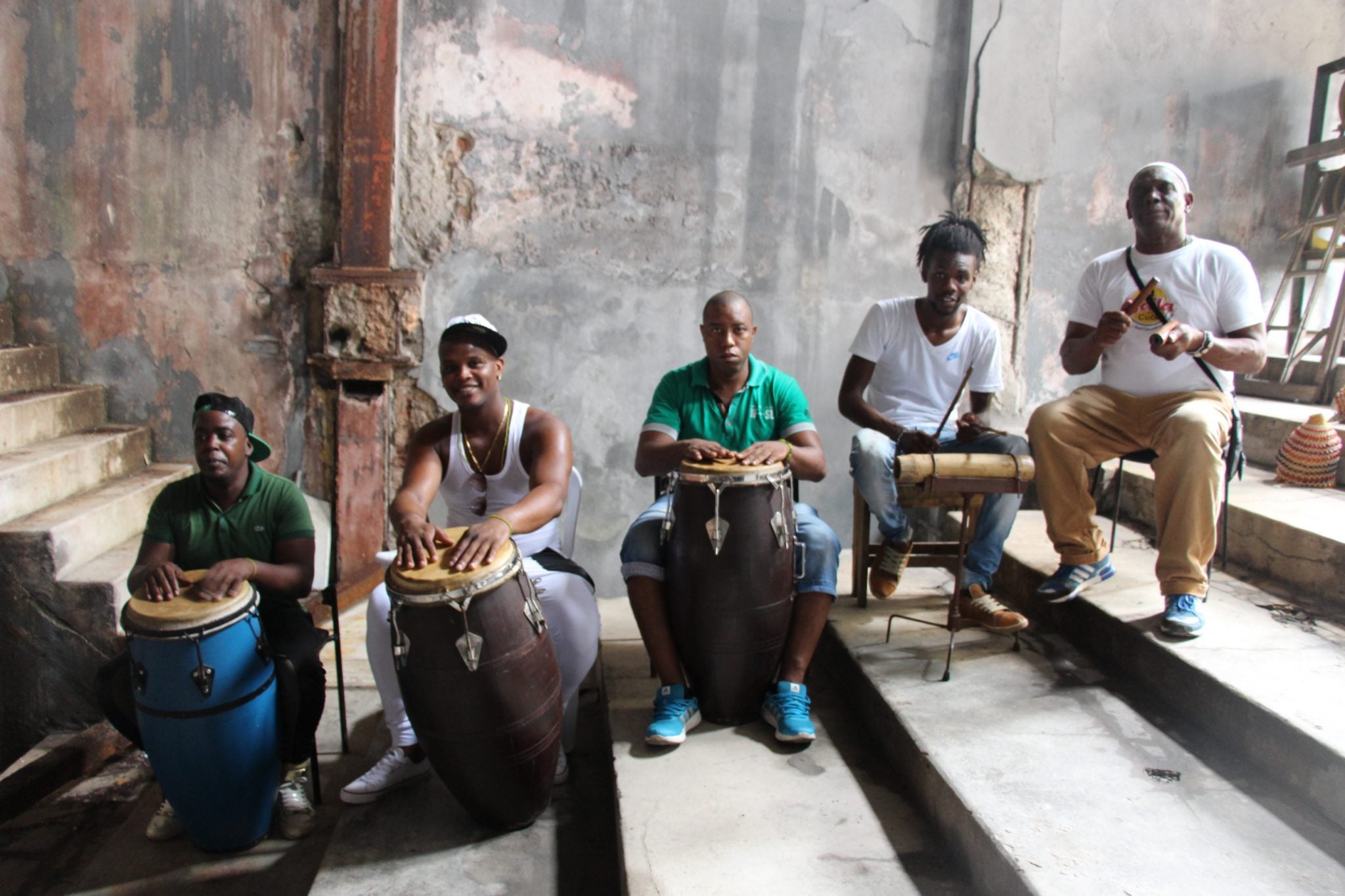
Photo Credit: Gilles Peterson via Ourscreen
“Rumba is us: Cuba”
I recently had the pleasure of attending a screening of Havana Club Rumba Sessions – La Clave, a documentary exploring and celebrating the roots of rumba. Directed by Charlie Inman and narrated by Gilles Peterson, the love for rumba conveyed by all those involved in the documentary is completely infectious. This screening was shown at AMC Manchester, hosted by Ourscreen, a fantastic organisation putting on films chosen exclusively by the people, so bringing local communities together.
Like a history lesson in rumba, the documentary guides us through rumba’s spiritual significance in Cuba, from its historic roots in the slave trade right through to its ‘remodelling’ by the most recent generation of rumberos; Rumba is tradition, but it is also current and exciting. What is so evident throughout the documentary is that rumba is right at the heart of Cuban life, especially in Matanzas, the epicentre of Cuban rumba. Emerging from the spiritual drumming practices of the colonial past, as well as religious and folkloric African traditions including Abakua and Yuka, rumba combines so many traditions that it runs deep through the blood of the people. Rumba remains a very spiritual and sacred part of Cuban life. A revered drum maker explains to us the spiritual significance of the batá drum, which is believed to contain a spiritual energy within that is ‘alive’.
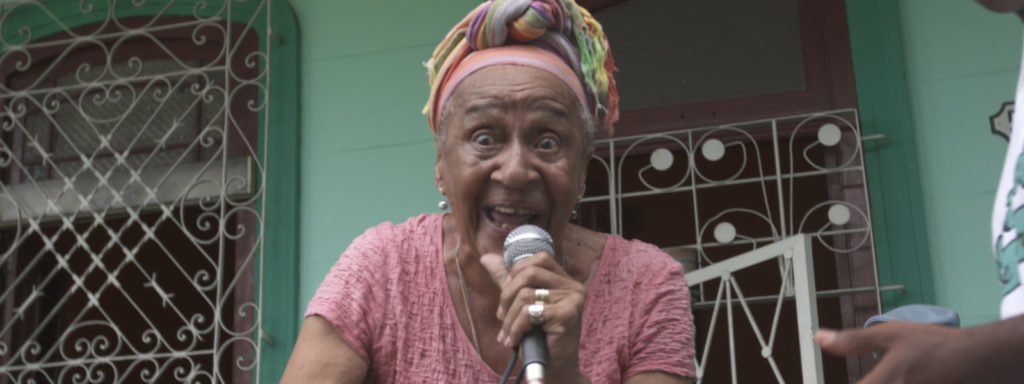
Photo Credit: Gilles Peterson via Ourscreen
Guided by Ade Egun Crispin Robinson, a well-connected member of the rumba scene and an expert batá drummer himself, we meet many of the key figures in rumba from across the generations. Most enchanting of all, perhaps, is Daymé Arocena, an exciting figure in Cuba’s current rumba scene. Arocena’s love of rumba is captivating, and the music she’s making seems to be drawing together the various groups of rumberos and percussionists. Often manifested in energetic and spontaneous gatherings, the process of creating and performing rumba is a passionate celebration of the music: the high-energy party atmosphere in the documentary is intoxicating, as men and women of all ages join in with singing, dancing and playing instruments.
Rumba is more than simply about the beat; it is made up of many components. While the documentary is a lesson in the history of rumba, it is also aims to educate us on the basic elements of rumba. We are taught firstly about the percussion – the heart of rumba. The basic sounds are determined by the ‘clave’, which produces a raw, rhythmically complex sound that allows the other percussionists to build upon this beat. What is so exciting is the idea that you can perform rumba anywhere with any materials, and therefore the music is not restricted. We then discover voice of rumba, described as the ‘oldest expression of rap’, which is traditionally a conversation or an oral test of the stories passed down through the generations of rumberos. Finally, we meet the dancers, particularly the renowned Jennyselt Galanta Calvo and Domingo Pau. There are three main styles – Yambú, Guaguancó and Columbia – and each dance has a different purpose and style in response to the sounds of the music. These include sexual, flirtatious and romantic dances, which combined with the spirited music creates an explosion of energy and joy.
Perhaps one of the most compelling aspects of Peterson’s documentary is how it celebrates the different styles of rumba in Cuba that are coexisting yet are also adapting. While the older generation of rumberos remains traditional in its style, the younger generation is re-contextualising rumba and making it more accessible to those in the contemporary club scene. We can thankfully have confidence in the fact that Cuba’s obsession with rumba will continue evolving for a very long time.
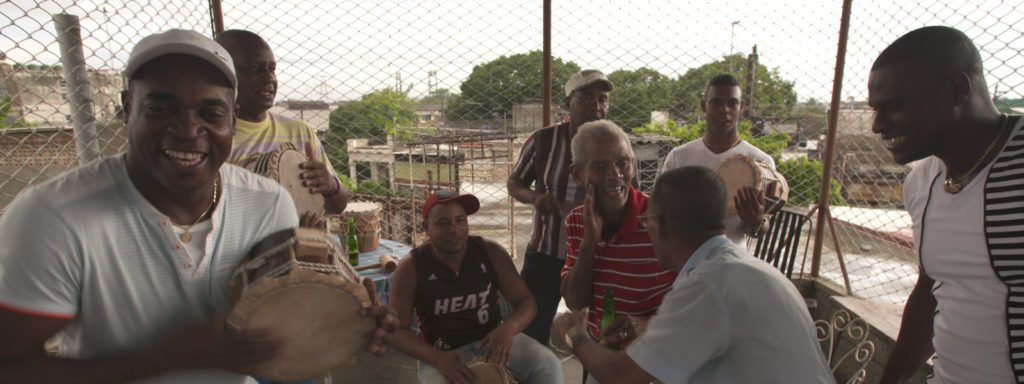
Photo Credit: Gilles Peterson via Ourscreen
Filed under: Film, TV & Tech, Music, Theatre & Dance
Tagged with: Cuba, documentary, Gilles Peterson, Havana Rumba Club Sessions, ourscreen
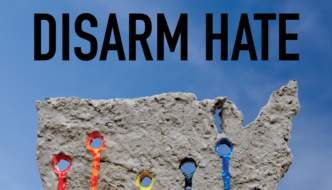

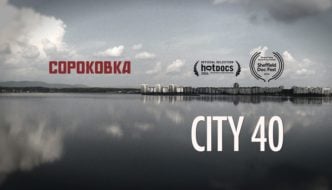
Comments